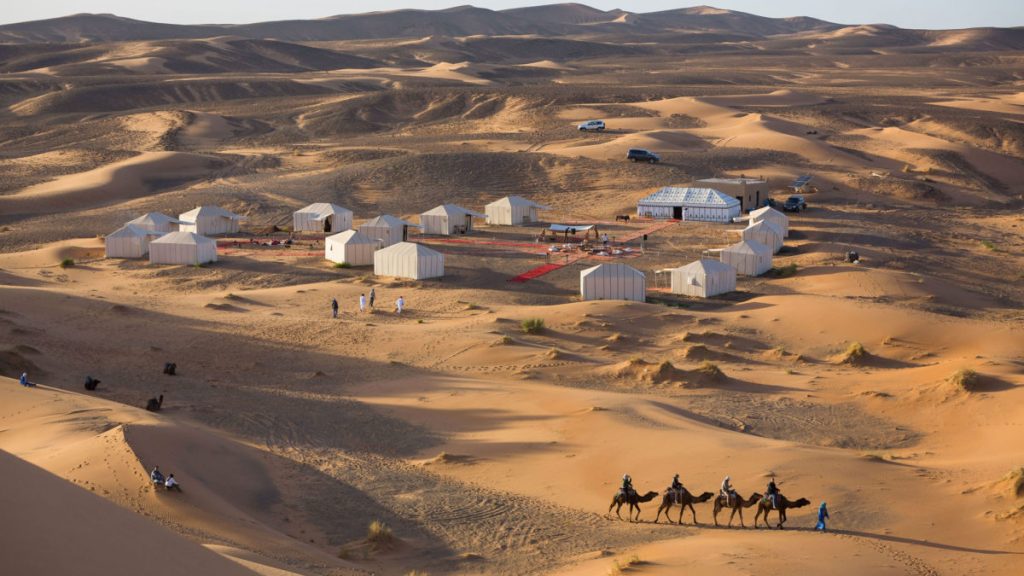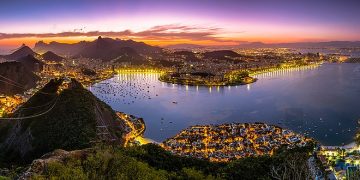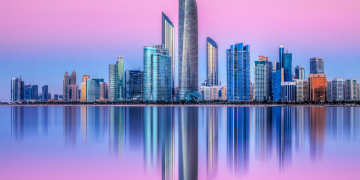For years, Morocco’s famed riads—those serene courtyard-centered mansions nestled in the heart of ancient medinas—have held a near-mythical status among travelers. They offered a world of intricate zellij tiles, ornate stucco, and fragrant orange trees shielded from the chaos outside. But in 2025, a new aesthetic has swept across the Moroccan travel scene. Or rather, an old one rediscovered. Travelers are venturing far beyond the city walls, into the boundless silence of the Sahara and the undulating dunes of Erg Chebbi or Erg Chigaga, to sleep in khaimas—traditional nomadic tents used by the Amazigh (Berber) people for centuries. Once seen as rustic or reserved for hardcore adventurers, these desert dwellings have transformed into magnetic travel experiences, rivaling the comfort, cultural intrigue, and social media allure of Morocco’s most stylish riads. It’s not just about the scenery—it’s about connection, storytelling, silence, and stars.
The Rise of the Khaima: From Survival Shelter to Aesthetic Sanctuary
The khaima (also spelled khayma) is the desert’s original architecture. Crafted from hand-woven camel wool or goat hair, these tents are built to breathe in the heat and shield from windstorms, designed for a life on the move. In recent years, they’ve been reimagined—not as sterile glamping domes, but as soulful homages to traditional desert life. Now, these tents come furnished with patterned Berber rugs, low-slung cushions, embroidered blankets, and lanterns that cast flickering shadows like something out of an old folktale.
Unlike plastic-wrapped prefab camps, the newer wave of khaima accommodations remain grounded in place and purpose. They’re increasingly managed by Amazigh families who blend ancestral design with minimal touches of luxury—solar-powered lighting, soft linens, and warm tajine dinners served beneath endless stars. Travelers sleep close to the earth and wake to the sound of shifting sand instead of honking scooters or morning call to prayer. The experience is immersive, quiet, and humbling. It’s the kind of travel that reorders your sense of time.
Stargazing Over WiFi: A New Luxury for Tired Souls
As digital fatigue reaches new levels in 2025, more travelers are seeking out what they can’t scroll—space, silence, sky. Nowhere delivers this like the Moroccan desert. Under a khaima roof, guests are treated to what many describe as the most extraordinary stargazing of their lives. With no urban light pollution for hundreds of kilometers, the Sahara becomes a natural planetarium. You can lie back on woven mats as constellations arc over golden dunes, the Milky Way exploding across the heavens with impossible clarity.
Some camps incorporate astronomy into the experience, with guides pointing out Berber legends woven into star patterns. Others keep it simple—hot mint tea, a bonfire, a drumbeat, and the sky. In a world obsessed with screens, these moments are digital detox made poetic.
Unlike the stiff silence of hotel rooms, this kind of silence pulses with meaning. There’s a drumbeat in the distance, the wind whispering against the tent fabric, and sometimes even the low chant of a camp host singing to the fire. You feel time stretch in all directions. It’s a type of sleep that goes deeper than REM cycles. It’s soul rest.
Berber Hospitality: Deeper Than Décor
While riads offer a curated version of Moroccan luxury, khaima stays often go deeper into the lived reality of the culture. Many camps are run by Amazigh hosts who don’t simply serve you—they share with you. Meals are homemade and communal, often cooked over wood fires and served family-style on low round tables. You eat with your hands, learn to fold bread as scoops, and hear the stories behind every dish. Harira soup, grilled lamb, dates soaked in milk, couscous steamed for hours—it’s a lesson in heritage as much as hospitality.
Beyond food, there’s music. When the stars rise, so do the rhythms. Drums, castanets, and ululations rise around the campfire, inviting even the most jetlagged guests to join in. There’s no scheduled show or performance—just shared moments of song and storytelling. This is what many travelers remember most: the moment a host with sun-leathered hands taught them a few words in Tamazight, or the lullaby hummed softly from a nearby tent at night.
Khaima Camps vs Riads: A New Kind of Comfort
It’s not a competition—just a shift in desire. Riads still captivate with their color and calm, but for many 2025 travelers, khaimas offer something riads can’t: an experience of Morocco outside the walls, away from mosaic pools and artisanal gift shops, and into the rhythm of wind and firelight.
What surprises many first-time khaima guests is how comfortable these tents have become. You’re not sleeping on the floor unless you want to. Raised beds, down blankets, private en-suite bathrooms with eco-toilets, and even solar-heated showers are now common in higher-end camps. Yet the design remains respectfully traditional. Interiors avoid garish modernization. The elegance comes from texture—woven mats, wood-carved stools, brass trays, and soft candlelight.

Some khaima camps cluster their tents in open crescents to encourage shared meals and new friendships. Others space them widely apart for couples or solo travelers who crave solitude. Either way, what you wake up to is the real prize: golden silence, rose-tinted dunes, and the surreal feeling of being wrapped in ancient stillness.
Instagram Appeal Meets Authentic Substance
Let’s not pretend Instagram doesn’t play a role. The visual contrast of bright textiles, golden sands, and flowing robes is undeniably seductive. In fact, many influencers and travelers now schedule desert stays purely for the aesthetics. But what they often discover is something deeper. Because unlike curated riad corners, the desert isn’t staged. The wind changes the dunes overnight. The sun plays its own light games. And the best khaima camps don’t try to out-design nature—they harmonize with it.
The result? Yes, you’ll get that perfect photo of yourself sipping mint tea with the dunes behind you. But you’ll also come away with something unfiltered: the surprise of cold sand under your feet at dawn, the way a stranger’s story over lentils makes you rethink your own, the silence that stays with you even after you’re back in Marrakech traffic.
How to Choose a Khaima Camp in 2025
Options range from rugged and remote to semi-luxurious and all-inclusive. Here’s what to consider:
- Location: Camps in Erg Chebbi (near Merzouga) are more accessible and offer classic dune scenery. Erg Chigaga, near M’Hamid, is more remote, requiring 4×4 access and offering a wilder feel with fewer tourists.
- Ownership: Prioritize camps run by local Amazigh families or co-ops over outsourced glamping chains. These provide more authentic experiences and support the communities who’ve lived here for generations.
- Style and Comfort: Know your comfort level. Some khaimas have plush mattresses and private bathrooms. Others offer simpler setups but more cultural depth. Many now include solar charging stations, fire pits, and even camel treks or sandboarding options.
- Group Size: Smaller camps offer intimacy and flexibility, while larger ones cater more to groups and tours. Solo travelers might appreciate boutique camps with shared dining and communal fire circles.
When to Go and What to Pack
The best months for desert travel are March to May and September to November. Summer can be dangerously hot, while winter nights drop below freezing. Layered clothing is essential, including a warm jacket, head covering, and scarf for wind protection. Sunglasses, sunscreen, and reusable water bottles are non-negotiables.
Leave heels and hard luggage behind. The desert favors soft fabrics, sturdy sandals, and bags you can carry easily across sand. Bring a notebook—you’ll want to remember what this place does to your thoughts.
Who’s Sleeping in Khaimas Now?
Not just backpackers or influencers. In 2025, the appeal of khaima stays has expanded to wellness seekers, culture lovers, digital detoxers, solo female travelers, and even honeymooners looking for intimacy under the stars. The desert offers something for everyone: simplicity for those burnt out by choices, beauty for those starved for nature, and culture for those hungry for connection.
Khaimas aren’t replacing riads—they’re rewriting the Moroccan experience into something that feels more rooted, more reciprocal, and undeniably more memorable. They invite you not just to observe Morocco, but to inhabit it.
Conclusion: The New Soul of Moroccan Travel Sleeps Under Canvas
There’s a quiet revolution happening in the dunes of Morocco. As more travelers trade tiled courtyards for windblown tents, they’re not just chasing novelty—they’re returning to the source. The khaima isn’t a luxury add-on or a photo op. It’s a return to the land, a conversation with heritage, a night under stars that no ceiling can replicate.
If 2025 is the year of meaningful travel, then the khaima is its tented heart. Come for the stars, stay for the silence, and leave with a story no filter could ever tell.





















